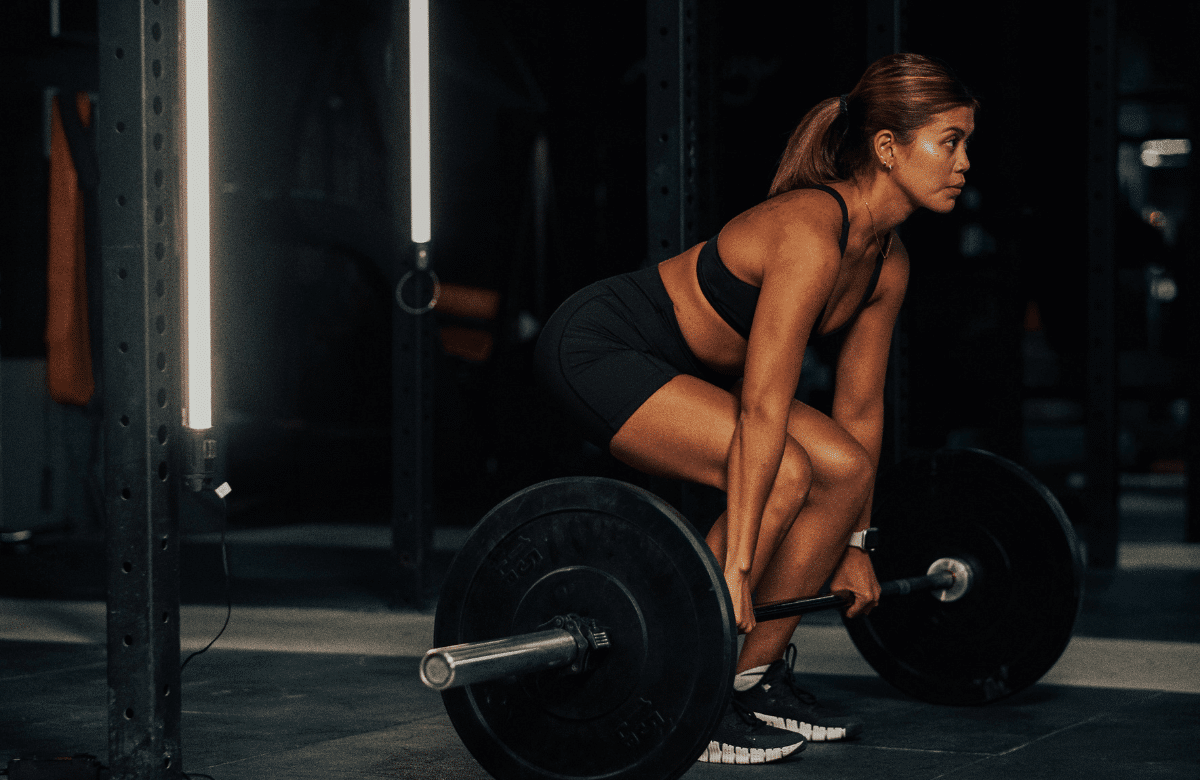Weightlifters are always looking for good lifting exercises and variations to improve and add variety to their exercise regime. Rack pulls may be a good lifting exercise for your lifting workout. Continue reading to learn more about rack pulls, how to do them, and all the benefits included in this fantastic exercise.
Jump to:
What Are Rack Pulls?
Rack pulls are a variation of the conventional deadlift. Like a traditional deadlift, the lifter raises a loaded barbell straight up, but when completing rack pulls, the barbell begins and ends on the supports of a power rack, which are placed at or just below the knee.
Although it seems very simple and almost effortless, it’s a surprisingly powerful compound move requiring perfect execution to benefit from the exercise most.
How to Do Rack Pulls with Good Form
Completing rack pulls with good form is crucial to lifting without injury. First, get your bar in position. It should be resting on a rack about knee height for easy access. This makes it easier to deadlift more with heavy weights attached.
Then, get into position with your body, hands, and feet in the proper stance. Start with your feet shoulder-width apart, with your toes pointing slightly outward. Keep your knees slightly bent.
Then lean forward with your body positioned over the bar. Grip the bar with both hands slightly more than shoulder-width apart. Lifters often use an overhand grip with palms facing up, but you can also use a mixed grip with one hand overhand and one underhand. Additionally, you should align the barbell with your midfoot.

Once your body is in position, you are ready to begin lifting. Begin by pushing your heels into the floor while shifting your weight onto your hamstrings. Then squeeze your shoulder blades together. Inhale with your diaphragm and activate your ab muscles and core.
Now you are finally ready to lift the bar. Move your spine into a neutral position and raise the bar off the rack by pushing your hips forward. Keep the barbell moving in a straight path up, and then slowly lower the bar back down until it hits the rack before starting the next rep.
What Muscles Do Rack Pulls Work?
Rack pulls work many muscles, including the hamstrings, glutes, quadriceps, back and trapezius muscles, and lower back muscles. Let’s look at each of these muscles a little more.
Hamstrings
The hamstrings consist of three muscles on the upper thigh’s back. There are a few different hamstring functions, including hip hyperextension, extension, and knee flexion.
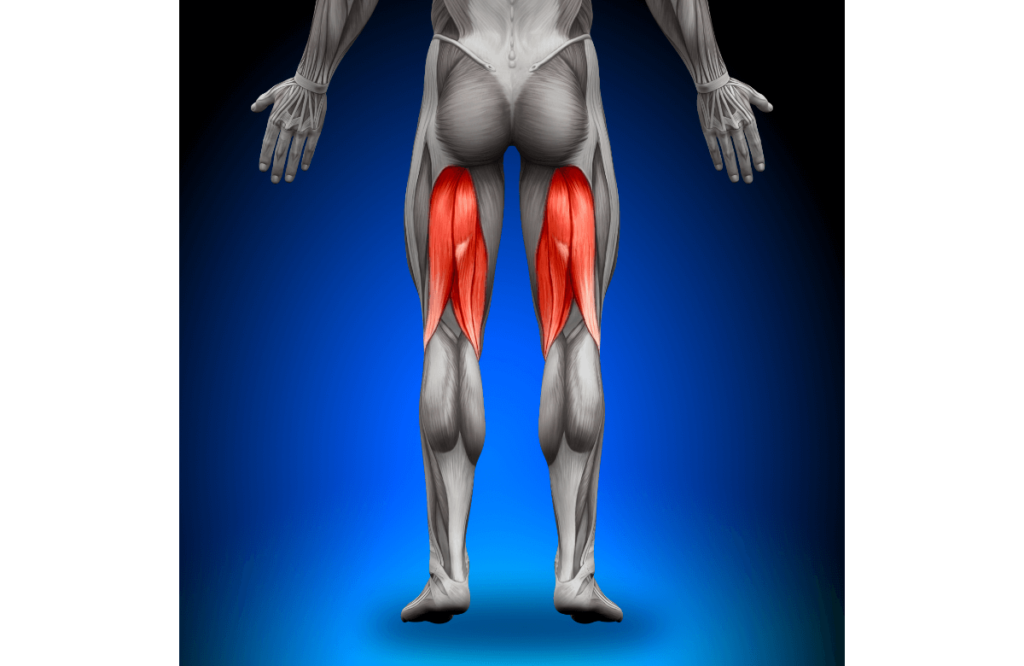
Also, when completing rack pulls, your hip plays a small part in hip flexion. However, you can increase hamstring engagement by beginning the rack pull with the barbell at a lower height located below your knees.
Glutes
When doing rack pulls, the glutes are the star of the show. The glutes, or gluteus Maximus and minimums, are the largest muscle grouping in the body, providing the necessary stability to keep the body upright along with hip extension needed for walking or standing.
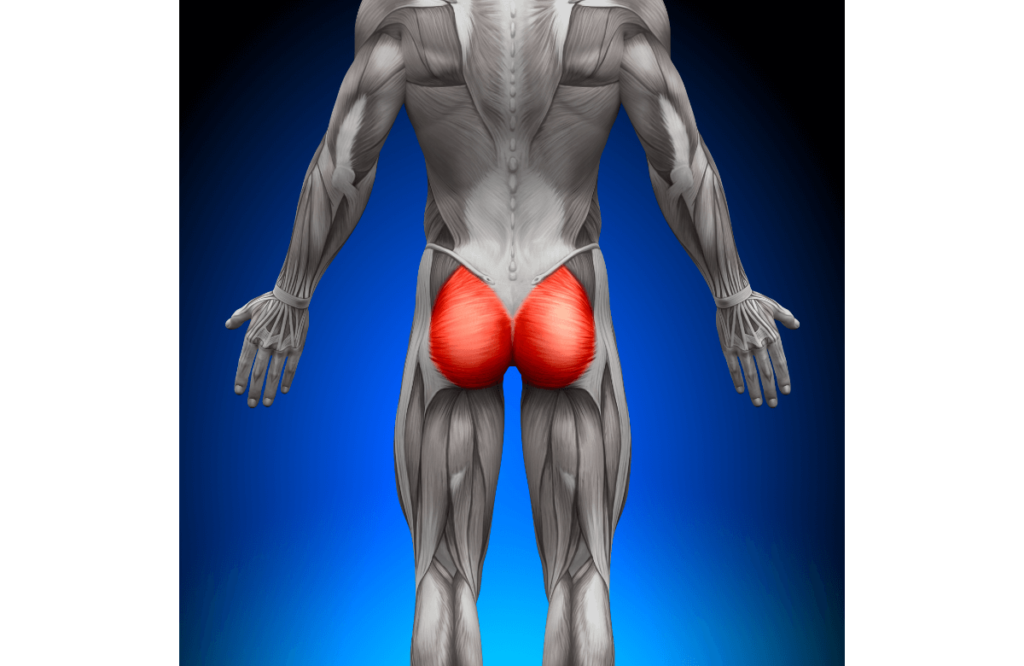
The glutes also provide external hip rotation required to move your legs laterally and the hip adduction needed to open and close the legs. When doing rack pulls, the gluteus maximus is the crucial mover needed to enable hip extension.
Without strong glutes, you have a much higher chance of injury in your hips when working out.
Quadriceps
The primary function of the quadriceps muscles is to extend the knee. They also assist in stabilizing the kneecap, or patella, and they support hip flexion.
Although the lifter does not use the quads extensively, they activate them towards the top of the movement when you go to lock out your hips.
Also, like the hamstrings, if you begin your rack pull from a lower height below your knees, you can engage your quads to a higher degree. So depending on your experience level, you might do rack pulls below knee level.
Upper Back and Trapezius Muscles
The upper back and trapezius muscles are the large back muscles that begin at the base of the skull, travel down the backbone to the lower thoracic vertebrae, and then laterally to the spine of the scapula or shoulder blade.
The trapezius, or traps, supports the head movement and moves the shoulder up and down when shrugging. During rack pulls, the traps work hard to support and stabilize the weight load when lifting. Therefore, the rack pull is perfect for building and strengthening your trapezius muscles.
Lower Back Muscles (Erector Spinae)
The lower back muscles and tendons run the entire length of both sides of the spine from the sacrum, or lower back, to the skull base. The main functions of the lower back muscles are stabilizing the upper body, side-to-side rotation of the core, and lateral extension and flexion.
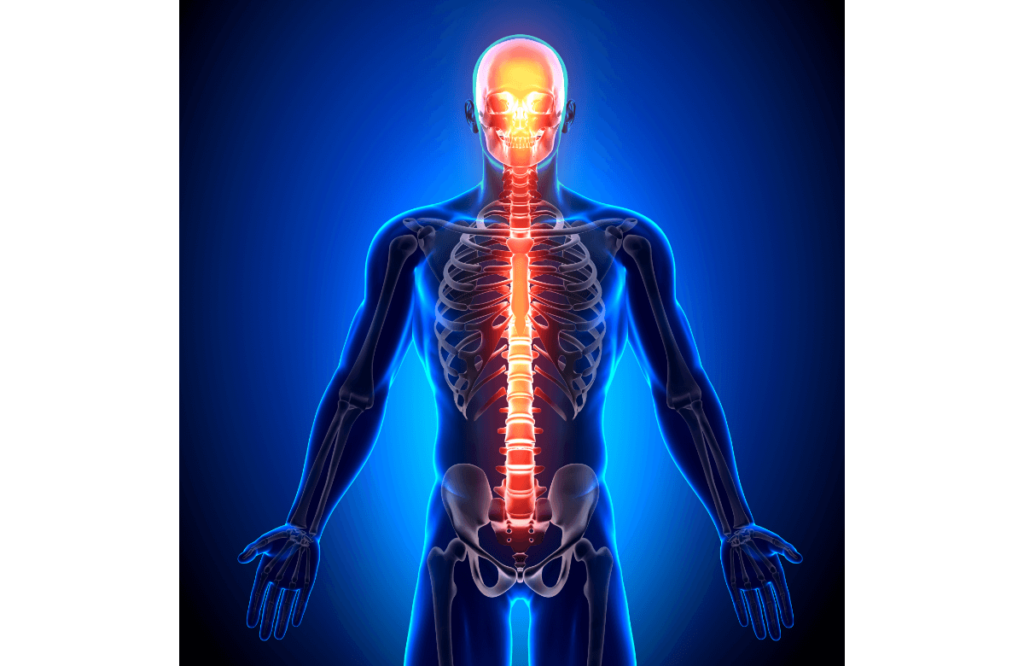
When completing the rack pulls, the erector spinae supports hip flexion, which allows you to straighten your spine when lifting. A stronger back significantly decreases your back injury risk.
What Are Rack Pulls Good For? 5 Benefits of Regular Training
Rack pulls have many advantages, but there are 5 main benefits to regular training. These benefits include improving deadlifts, strengthening your upper back muscles, improving your grip, strengthening pulling muscles, and reducing stress on your lower back.
1. Improve Your Deadlifts
Rack pulls are similar to regular deadlifts but only focus on a smaller range of motion because the rack pulls begin with the barbell on the rack versus on the ground. Therefore, the lifter can focus on a smaller section of the deadlift range of motion, improving the lifter’s skills.
Because of the location of the rack, it’s easier to increase the weight plates on your barbell and lift heavier loads. Lifters can even do a partial deadlift when they’re starting out to work on proper form and reduce the risk of injury as a beginner.
2. Stronger Upper Back Muscles
Rack pulls strengthen your upper back muscles because they strengthen the trapezius muscles. Rack pulls mostly engage the traps to support the weighted barbell as the erector spine, or lower back muscles, provide the power to extend the spine while returning to an upright position.
3. Stronger Grip
The rack pull is an excellent exercise to build grip strength, but only if you use something other than wrist wraps. Rack pulls build grip strength because they typically involve heavier weights than when doing a standard deadlift.
Holding or gripping the barbell with heavier weights strengthens your finger, hand, and forearm strength. Completing rack pulls with a mixed grip can also improve grip strength. Therefore, you’re better prepared to face a heavy lift without fear of losing your grip.
4. Strengthen Pulling Muscles
The rack pulls the last half of the lifting motion of a deadlift. So, rack pulls are great for strengthening the pulling muscles, or upper back and trapezius muscles. Improving your upper back and shoulder muscles is beneficial for deadlifting and completing the snatch, power clean, and clean and jerk exercises.
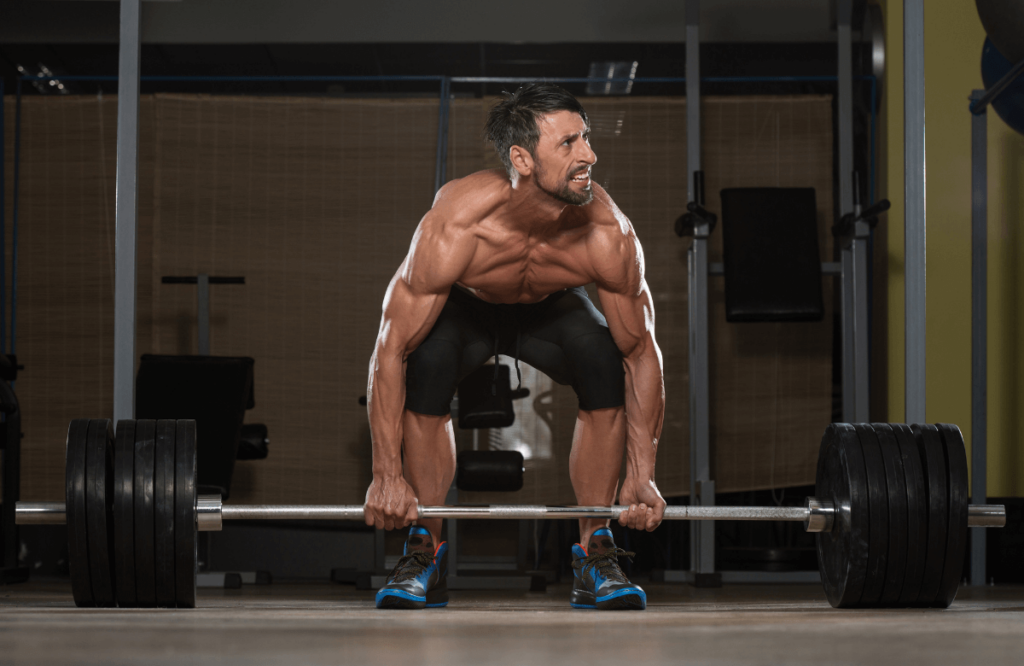
5. Reduce Stress on Lower Back
Rack pulls have a more vertical posture and, therefore, have a reduced range of motion, making it easier on your lower back. Thus, rack pulls can be good exercise if lower back strain is a concern or if you’re rehabbing after an injury.
Rack pulls support rehabbing even more when you start with a high rack position and work lower as your back strength and mobility improve. Partial range rack pulls can be very helpful for those building strength and endurance in their back muscles.
Be aware: Rack pulls can still be dangerous for your lower back if you’re hyperextending your back. If you have a back injury, always get clearance from a doctor before completing rack pulls or beginning exercising again.
Rack Pull Mistakes to Avoid
Although the rack pull can seem simple, it can be complex, and lifters can easily make a mistake while completing the lift. Below are some common mistakes you should try to avoid if you want to succeed with the rack pull. Read on to learn more.
Failing to Engage Stabilizer Muscles
Stabilizer muscles are your core muscles, such as the abs and obliques. Remember these muscles when completing the rack pull.
The shorter range of motion will impact how you use your stabilizer muscles, and it might. be tempting to leave them out of the equation. But if you don’t engage your core muscles, the lifter puts extra stress on the back muscles and could cause back strain or injury.
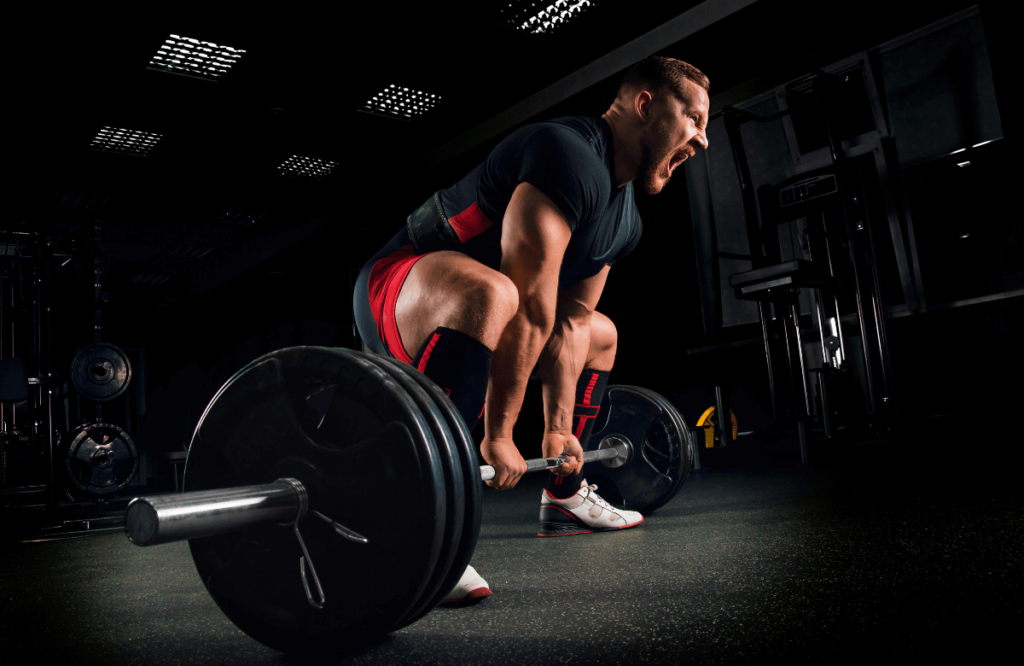
Lifting the Wrong Weight (Too Light or Too Heavy)
Although rack pulls aim to lift heavier weights than are possible with deadlifts, you must still be aware of when heavy is too heavy. The rack pull has a lower range of motion, meaning you can lift heavier weights than when completing deadlifts, but you still need to know how much your body can handle.
You could still hurt yourself if you put too much weight on the barbell. So be careful. Pay attention to how much weight is on your bar, and only move up incrementally.
Additionally, avoid putting too little weight on the barbell. Lifting too little weight will remove most of the muscle-strengthening benefits people seek when they complete rack pulls.
If you’re looking for a stronger posterior chain and benefits for your spinal erectors, focus on getting the appropriate weight on your bar.
Improper Starting Position
When lifting, proper form is everything. Without good form, lifters can easily injure themselves with even light weights. In contrast, a lifter with good form can often lift heavier weights.
Therefore, master your form, especially your starting position by grabbing only the barbell or a very light weight before adding more plates.
Rack Pull Variations
If you want to shake up your rack pull exercise, there are a few rack pull variations you could try. These may resemble deadlift variations you know.
The alternative exercises we chose to include are the high, banded, Smith machine, and sumo rack pull. Join us as we learn more about each variation and how to complete them.
High Rack Pulls
High rack pulls are completed similarly to the basic rack pull but with a very limited range of motion. A high rack pull begins with the bar at the mid to upper-thigh level.
This variation has an even shorter range of motion, so you should be able to complete this rack pull with the heaviest weight loads of all rack pulls. Some high rack pulls have a range of motion of only inches.
Banded Rack Pull
The banded rack pull uses resistance bands instead of weights for tension. You’ll use a power rack, squat rack, or Smith machine for this one because these pieces of equipment have pegs. You’ll loop the resistance bands onto the pegs close to the floor.
When completing the banded rack pull, instead of placing weights on the end of the barbell, you hook the barbell onto the resistance band and pull the barbell up. As the band stretches, the resistance level increases, increasing the challenge level as the lifter moves toward the top of the lift.
Banded rack pulls change the strength curve, which can cause new muscle fiber creation and directly lead to improved muscle gains.
Smith Machine Rack Pull
You can do rack pulls on the Smith machine as well. And, you can use even heavier weights because lifting with a Smith machine does not require the lifter to engage smaller stabilizing muscles to keep the bar moving up and down. The bar is already on a fixed plane, giving you more control over the movement.
That being said, Smith machine exercises may lead to a different overall muscle activation than the standard rack pull. Still, it’s a great option for beginners who need a little more control in the movement.
Sumo Rack Pull
Sumo rack pulls utilize a wider foot placement similar to the posture of a sumo wrestler, hence the name.
To perform the sumo rack pull, widen your stance and point your toes out at a 20-25 degree angle. This wider stance focuses more on the glutes and leg muscles than the standard rack pull. The sumo also begins with the back in a more neutral position.
The sumo rack pull improves a sumo deadlift’s top lockout strength phase.
FAQs
We’ve likely answered many of your questions. But if you still have some, here are some of the most frequently answered questions we see.
What’s the Difference Between a Rack Pull and Deadlift?
The most significant difference between a deadlift and a rack pull is that the rack pull has a reduced range of motion compared to the deadlift because the rack pull begins with the barbell on a power rack versus the deadlift, which starts on the floor.
Additionally, the reduced range of motion means lifters can lift a heavy rack easier. Plus, rack pulls may be safer for those with less experience than deadlifts. Because the bar starts higher up, you’re less likely to strain your back as long as the weight is at the right level.
Are Rack Pulls Just as Good as Deadlifts?
Yes. Rack pulls can be just as good as deadlifts. But there are differences including different benefits.
Rack pulls are mainly great for strengthening upper and lower back muscles. They can be easier on individuals with physical limitations as they have a reduced range of motion compared to deadlifts.
Ultimately, rack pulls are a fantastic supplement for these specific benefits to your weightlifting regime.
Are Rack Pulls Good for Your Back?
Rack pulls can be good for strengthening your upper and lower back muscles and help prevent back strain. Completing a shorter range of motion puts less stress on the back.
However, if you already have an injury, the rack pull may still not be the proper exercise. Please consult a doctor to decide which training activity is best for you.
How Much Weight Should I Use with Rack Pulls?
The amount of weight one should lift depends on many factors. Things like size, gender, and experience can all affect how much weight one should use with a rack pull.
However, the beginner male lifter should be able to lift about 150-200 pounds, with an average male lifting about 420 pounds.
Who Should Do Rack Pulls?
Anyone can do rack pulls, and most lifters incorporate them into their workout routine regularly.
But they’re perfect for those with mobility restrictions, pain issues, or an injury. Beginning lifters will likely also gravitate to rack pulls over deadlifts.
Additionally, rack pulls are suitable for people training to complete deadlifts because your deadlifts naturally improve when you master the form and focused range of rack pulls.



